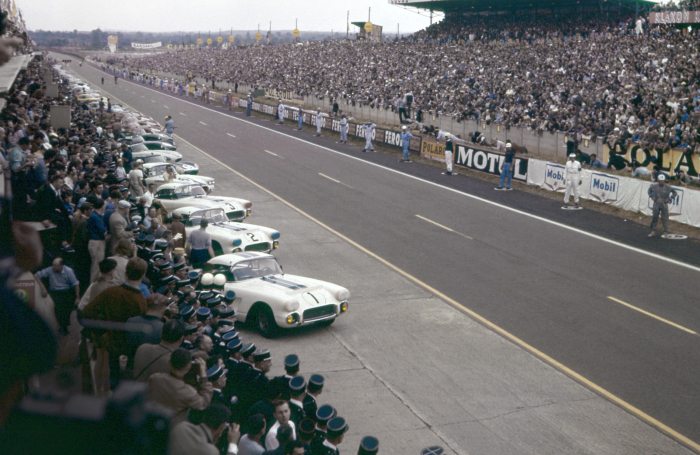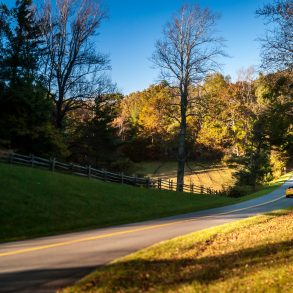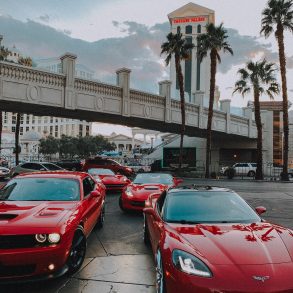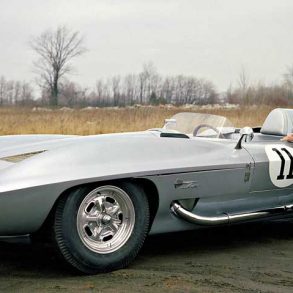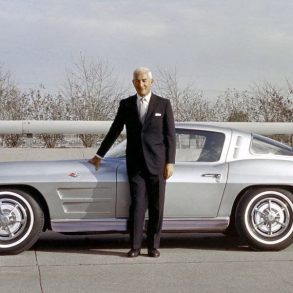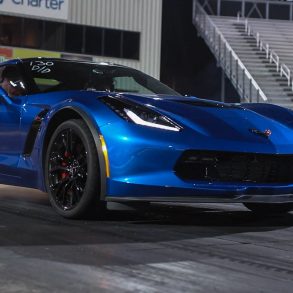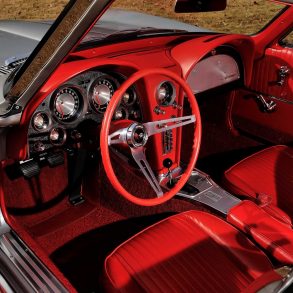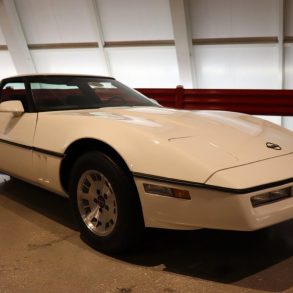1960 Corvette at Le Mans1960 – Urged by Zora Arkus-Duntov, Corvette’s first chief engineer, racer Briggs Cunningham entered three mostly stock Corvettes in the 24 Hours of Le Mans – each powered by the innovative 283 “Fuelie” mechanically fuel-injected small block V8 engine. In a race dominated by European factory teams, Cunningham’s No. 3 Corvette, driven by John Fitch and Bob Grossman, won the large-displacement GT class and finished eighth overall. In fact, the top 10 finishers included six Ferraris, two Aston Martins, a Porsche and the privateer Corvette.

1962-1963 – Encouraged by the European success and similar victories in America, Arkus-Duntov oversaw development of the original Corvette Grand Sport race cars, which were targeted for the 1963 Le Mans race. The plan was to build at least 125 ultra-light, high-powered cars to satisfy homologation rules for the GT production class. Only five were built before a General Motors edict eliminated “factory” racing support. The Grand Sport program officially died before the car made it to Le Mans.
1963-64 – Despite GM’s racing ban, Arkus-Duntov let the original Grand Sports slip into the hands of private racers, providing the real-world evaluation and technology transfer the gifted engineer was seeking. Roger Penske, A.J. Foyt, Jim Hall and Dick Thompson were among the racing luminaries who drove them.
1967 –Arkus-Duntov kept the spirt of the Grand Sport alive through the 1960s, with his hand in heavy-duty brake and larger fuel tank options designed to help racers take production cars from the street to the track. He also was behind the L-88 big block engine program launched in 1967, which was intended to give racers a rules-legal high-horsepower advantage from the factory. It would spur a series of racing successes over the next few years.
1984 – The Z51 performance handling package was introduced with the launch of the “C4” generation. It would become the preferred choice for owners who took their Corvette to the track. In fact, the Corvette became so dominant in SCCA Showroom Stock racing that it was banned by 1988, prompting the creation of the Corvette Challenge series.

1996 – Chevrolet introduced the Corvette Grand Sport special edition in the final year of the fourth generation. Only 1,000 were built – each with an Admiral Blue exterior featuring an Arctic White stripe and red hash marks on the left-front fender. Black wheels from the ZR1 model required flares for the rear fenders, and all models featured a 330-hp LT4 engine. Of the 1,000 built, 810 were coupes and 190 were convertibles

1999 – Corvette Racing returned to the global stage with the fifth-generation model and the C5-R race car. After an impressive debut, the team scored its first of three GTS class wins at Le Mans in 2001. The C5-R also helped secure four consecutive ALMS team and manufacturer titles (2001-04).

2005 – Building on the success of the C5-R program, Corvette Racing continued its winning ways with the C6.R. It was closer to production models, with its architecture based on the Corvette Z06 and its engine similar to the Z06’s 7.0L LS7. It won 39 GT1 races in ALMS, including 12 consecutive wins from 2005-06 and an impressive 25 straight wins from 2007 to 2009.

2010 – The Grand Sport was reintroduced in the C6 generation, offering design distinction with the wide chassis of the Z06 – including convertible models. It quickly became the Corvette lineup’s most popular model, accounting for more than half of sales by the close of the sixth generation in 2013.

2014 – A new Corvette generation bred the new C7.R race car. Like the previous generation, it used a production Z06 frame for its foundation, but for the first time it was built alongside the production models’ frames at the Bowling Green, Ky., assembly plant. The C7.R won the GTE Pro class at Le Mans in 2015.

2017 – The Grand Sport returns, leveraging more than 50 years of technology transfer from the track, while incorporating the distinctive styling attributes and special-edition aura that made previous versions popular with collectors. It is also the first production model to incorporate the chassis and suspension elements of the high-performance supercharged model in addition to its wider tires and fenders.
About Chevrolet
Founded in 1911 in Detroit, Chevrolet is now one of the world’s largest car brands, doing business in more than 115 countries and selling around 4.0 million cars and trucks a year. Chevrolet provides customers with fuel-efficient vehicles that feature engaging performance, design that makes the heart beat, passive and active safety features and easy-to-use technology, all at a value. More information on Chevrolet models can be found at www.chevrolet.com.


